Dive deep into the world of Kono Bairei, Japan’s Meiji era maestro, and his mesmerizing paintings of flowers and birds. Get free printables of his works!
Kōno Bairei was not just an artist; he was a storyteller. Every stroke of his brush told tales of Japan’s natural beauty, from the delicate intricacies of blooming flowers to graceful birds.
Born in the cultural heartland of Kyoto in 1844, Bairei’s life was as vibrant as his canvases. He was one of the pioneering figures of the Nihonga style, a traditional Japanese painting technique.
What is Nihonga Style Art
“Nihonga” means “Japanese painting.” This style began in the Meiji period (1868-1912) as Japan rapidly embraced Westernization. Artists created this style to set traditional Japanese painting techniques apart from Western methods.
Nihonga paintings can depict various subjects, from landscapes to mythological narratives, but they consistently use traditional Japanese materials. Artists craft the pigments from natural minerals, shells, and corals, then mix them with animal glue before applying them to the canvas. They often incorporate gold and silver leaf into their work.
Nihonga encompasses various subjects but always upholds Japanese traditions, techniques, and materials. Although it frequently represents traditional themes, artists can use Nihonga for modern topics, keeping the style current and vibrant.
Kono Bairei Birds & Flower Prints
The enchanting bird and flower paintings by Kono Bairei enhance our vast collection of vintage Japanese art and design featured on the site.
This collection also showcases the mesmerizing avian art of Ohara Koson and the iconic Edo pieces by Utagawa Kuniyoshi. Moreover, the group is enriched with intricate Japanese patterns and designs from the Shin-Bijutsukai.
All these captivating vintage illustrations of birds and flowers are in the Public Domain and available for printing.
Click on the desired print’s title, and a high-resolution image will appear in a new window. You can then save or print the image directly.
Kono Bairei Prints 1-5
In Japanese art, combining birds and blossoms often creates a harmonious representation of nature, capturing moments of fleeting beauty and eternal elegance.
The jay captures life’s vibrant yet fleeting moments with its lively energy paired with fleeting blossoms.
Plum blossoms represent perseverance and hope, as they bloom while snow is still on the ground, heralding the approach of spring.
Print 2: Cherry Blossom & Gulls
Blossoms, especially cherry blossoms (sakura), are deeply rooted in Japanese culture and aesthetics. Due to their short blooming season, cherry blossoms symbolize the transient nature of life.
Print 3: Peonies & Silver Pheasants
Peonies, known as ‘Botan‘ in Japanese, are often called the “King of Flowers.” They symbolize wealth, nobility, honour, and bravery. Their luxurious and full blooms represent prosperity and good fortune.
Cockatoos, native to Australia, were introduced to Japan during the late Edo period, symbolizing luxury and rarity due to their exotic nature. As Japan opened up to Western influences, these vibrant birds captured artists’ attention, appearing in ukiyo-e woodblock prints.
Print 5: Chinese Peony and Cranes
Cranes are cherished in Japanese art and culture, symbolizing longevity, good fortune, and purity. Featured prominently in everything from traditional origami and ukiyo-e prints to kimonos and legends, these graceful birds encapsulate ideals of peace and eternal youth, making them integral to Japanese artistic expression and cultural values.
Bird & Flower Prints 6 -10
The frequent depiction of Herons alongside calm waters or amidst reeds underscores their association with serene, natural landscapes and embodies the harmonious balance central to Japanese aesthetics.
Don’t forget to check out the collection of 40 beautiful Japanese Iris paintings on the site.
Print 7: Small Birds and Passion Flowers
In Japanese art, passion flowers are less common than traditional flora, like cherry blossoms. When depicted, they symbolize the allure of the unknown and nature’s intricacies, reflecting cultural exchanges between East and West.
Print 8: Exotic Birds and Chrysanthemums
In Japanese art, chrysanthemums, or “kiku,” symbolize longevity and rejuvenation. Their vibrant blooms are often depicted in traditional artworks that reflect nature’s beauty and imperial elegance, representing the Emperor and the Imperial family.
Print 9: Woodpecker in a Cherry Tree
Print 10: Crabapple Blossom & Peafowls
Given that Japan historically valued items and motifs from abroad, the peafowl, with its extravagant beauty, became a symbol of the exotic and the luxurious, representing a world outside of Japan’s islands.
Kono Bairei Prints 11-16
In Japanese art, waxwings’ elegant look often represents nature’s beauty and sophistication.
Print 11: Pear blossoms and Bohemian waxwings
Print 12: Japanese kerria and Cormorants
Its bright flowers and the contrast of its green stems against the snowy backdrop in winter make Japanese kerria a beautiful subject in traditional Japanese paintings and designs.
In Japan, this plant is called “yamabuki” (山吹). It appears in various forms of traditional art, poetry, and literature. The yamabuki flower is frequently referenced in Japanese poetry as a symbol of brightness and lightness, often juxtaposed against its absence, evoking a sense of nostalgia or longing.
Print 13: Japanese wisteria and white-bellied green pigeons
In Japan, wisteria is known as “fuji” (藤). It holds a notable place in Japanese culture and art. Gardens dedicated to the fuji, like the famous Ashikaga Flower Park, attract visitors worldwide with mesmerizing wisteria tunnels.
In art, literature, and poetry, wisteria often symbolizes love, sensuality, support through hard times, and even immortality due to its long lifespan.
With their graceful and striking blooms, Magnolia has held a special place in the art and culture of various Asian countries, including Japan.
The word for the owl in Japanese is “fukurou” (フクロウ). When broken down into its parts, “fuku” can mean “luck,” and “rou” can mean “to come,” which effectively translates to “luck is coming.” As such, owls are often considered harbingers of good luck and positive tidings.
Check out these other owl drawings on the site, including more Japanese paintings.
Other Vintage Prints
Don’t forget to check out all the other beautiful vintage botanical and vintage bird prints on the site. All are in the Public Domain and free to download.
If your interest is in birds and flowers then check out these tropical bird illustrations.
Or if you are into Japanese art and culture, these old maps of Japan and vintage Japanese photos are worth checking out. As well as the beautiful woodblock prints of Helen Hyde and this collection of Japanese fish illustrations.
Birds and flowers are also popular themes in these Japanese Kimono designs.

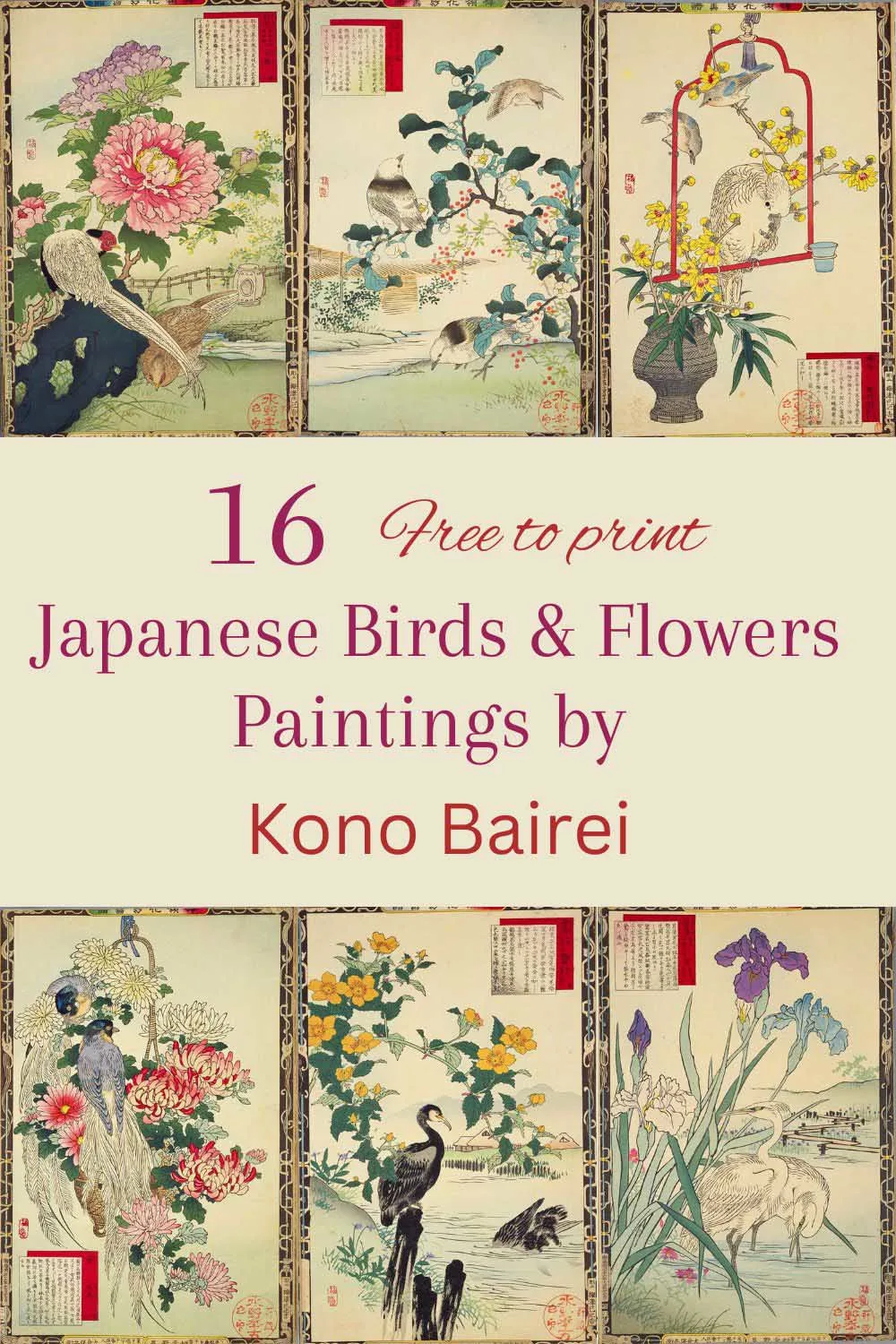
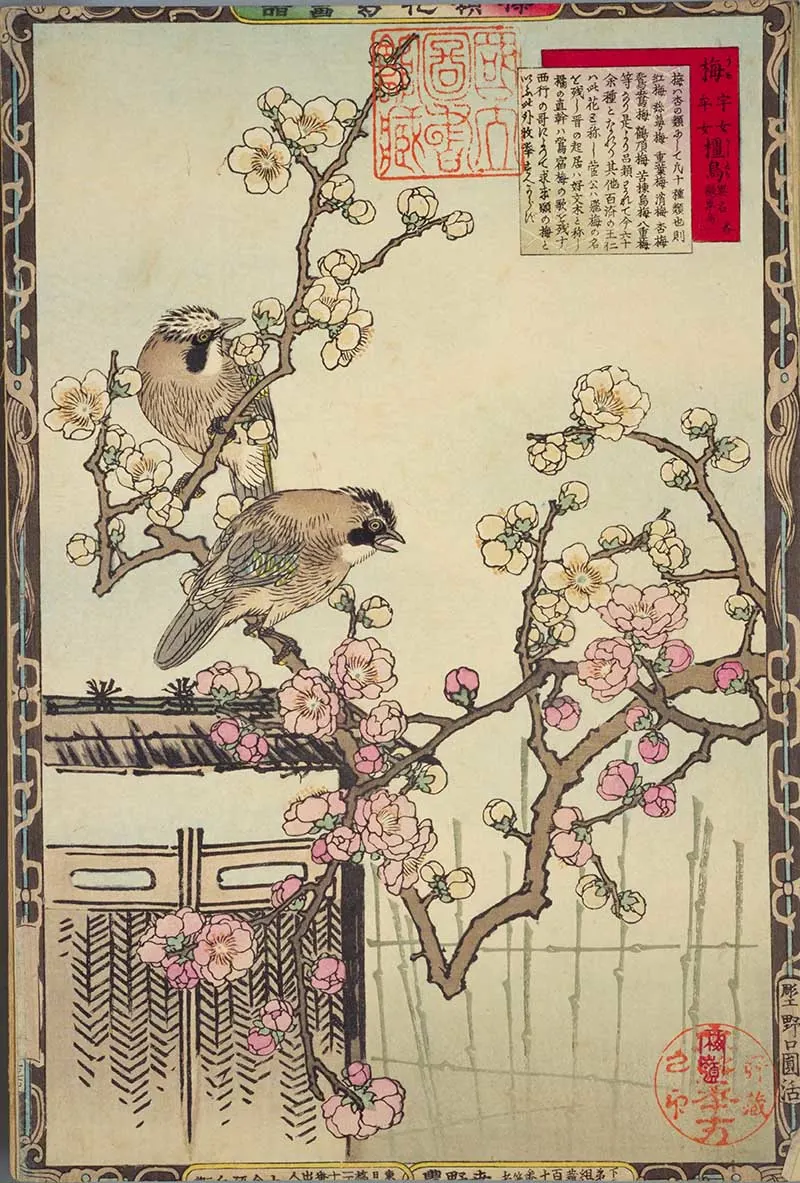
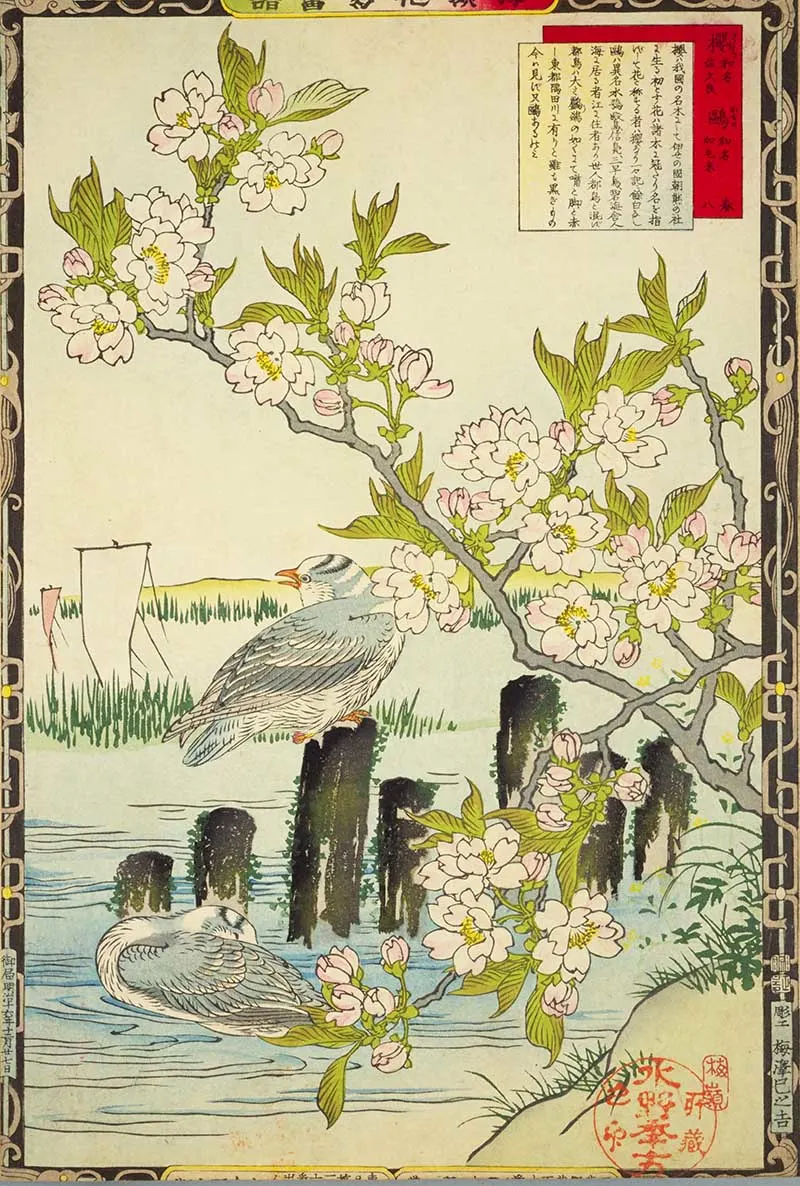
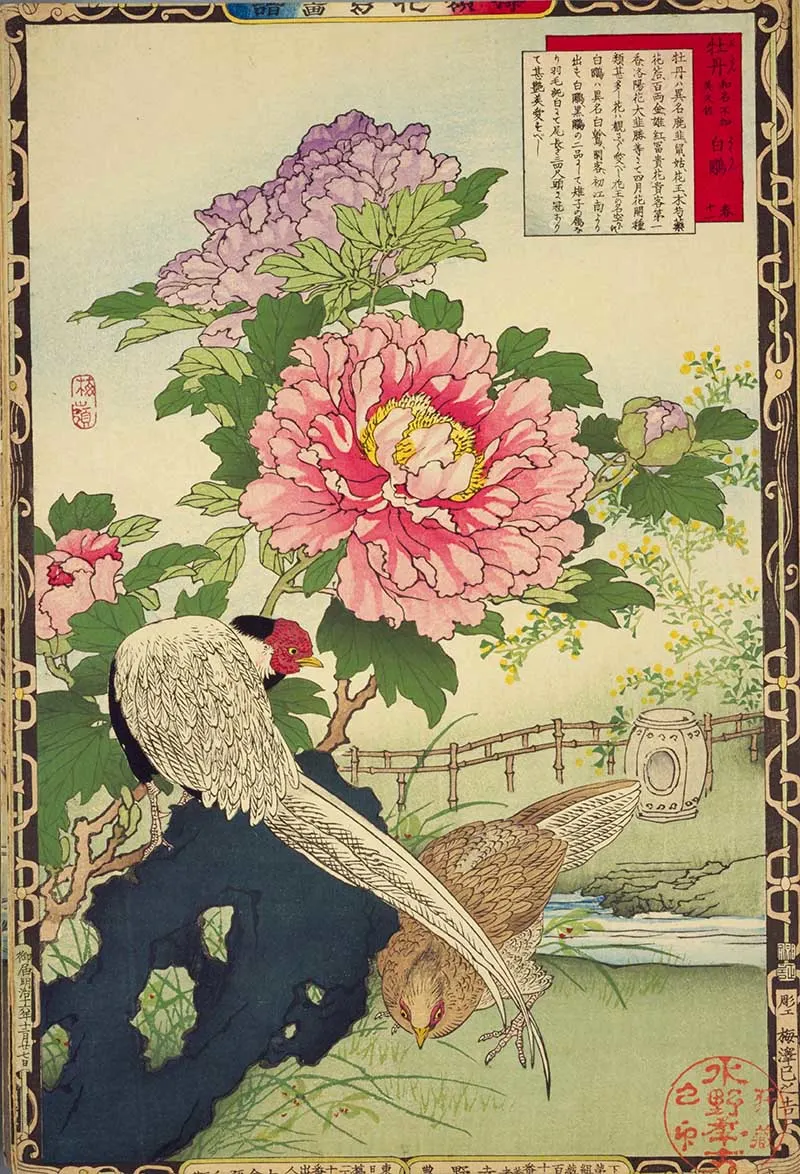
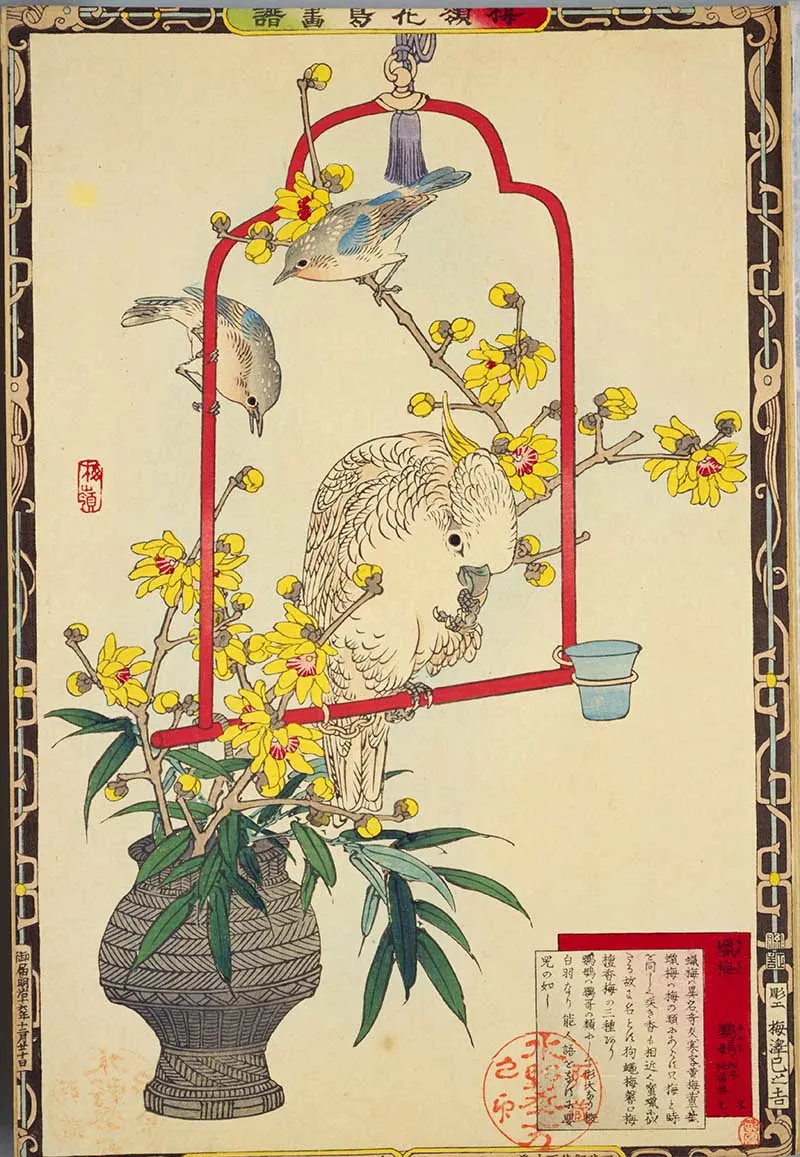
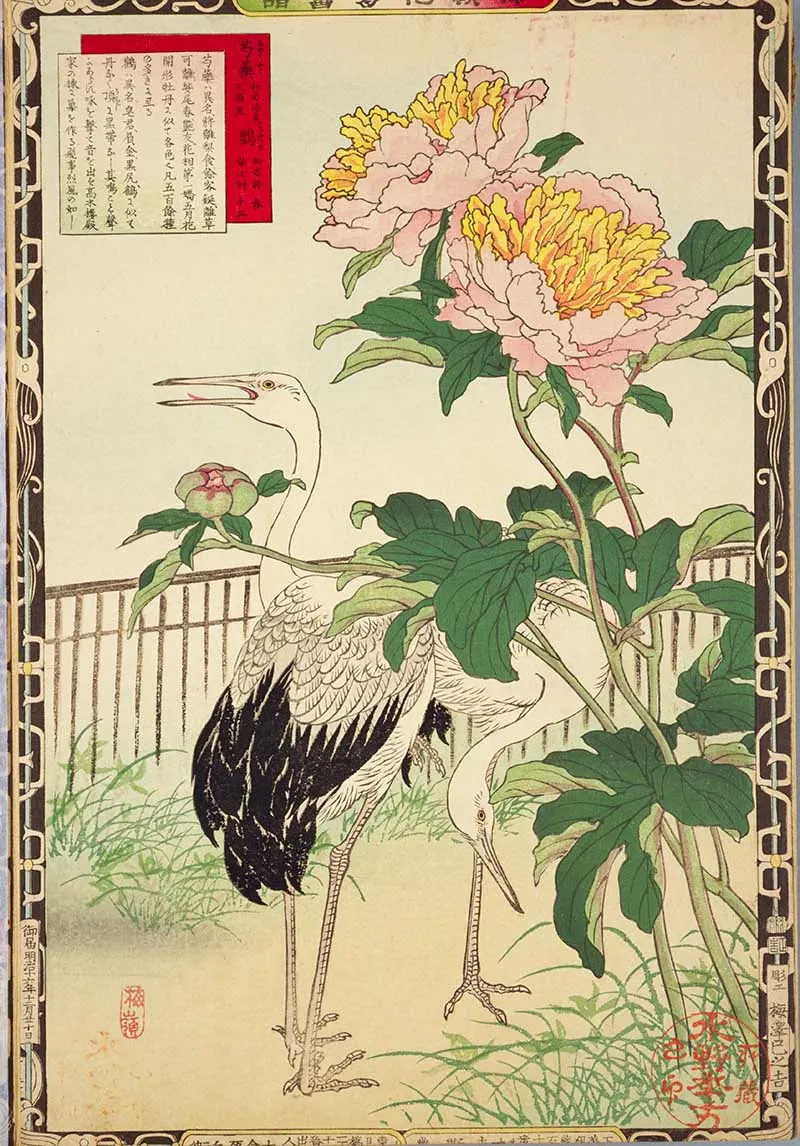
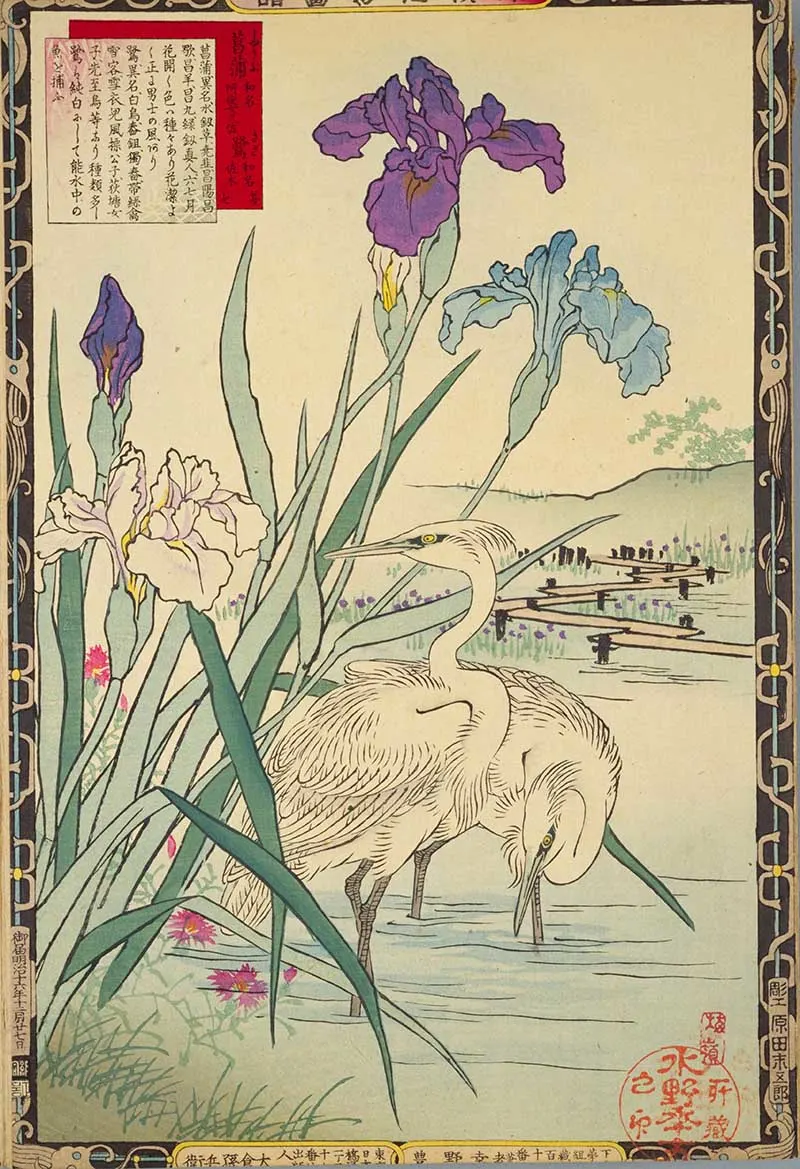
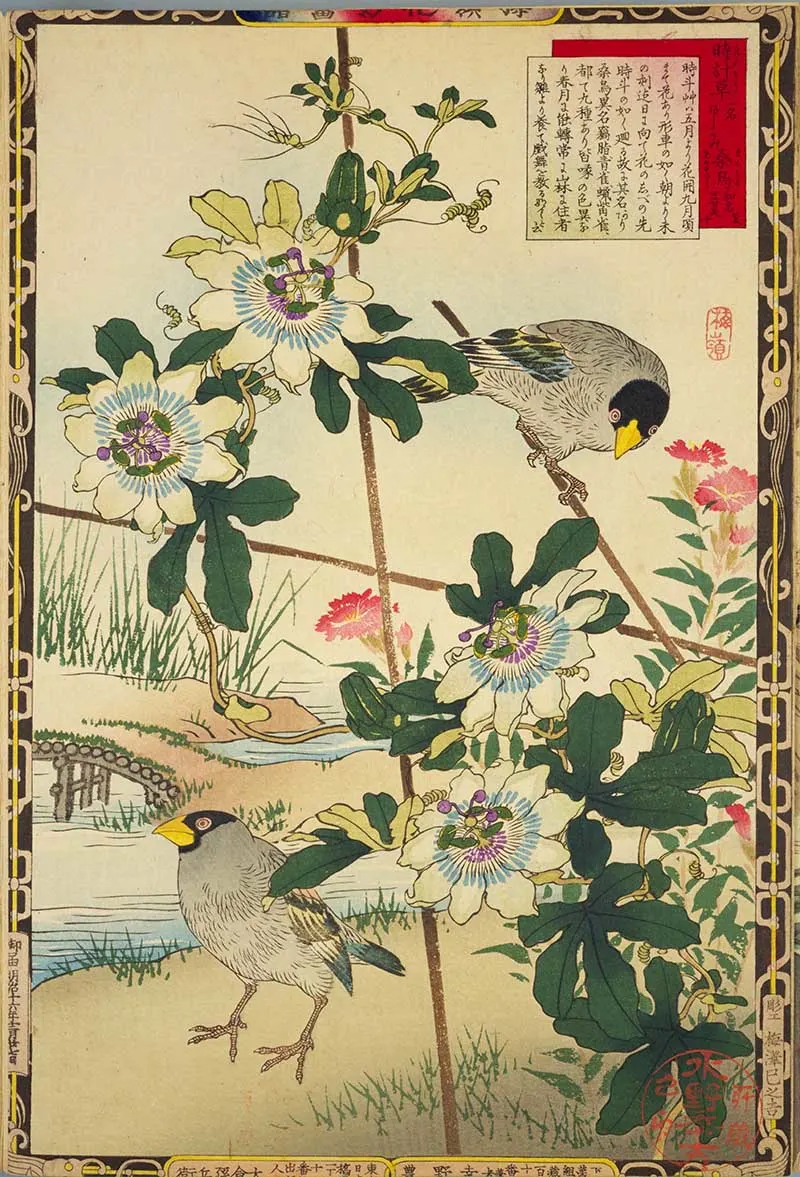
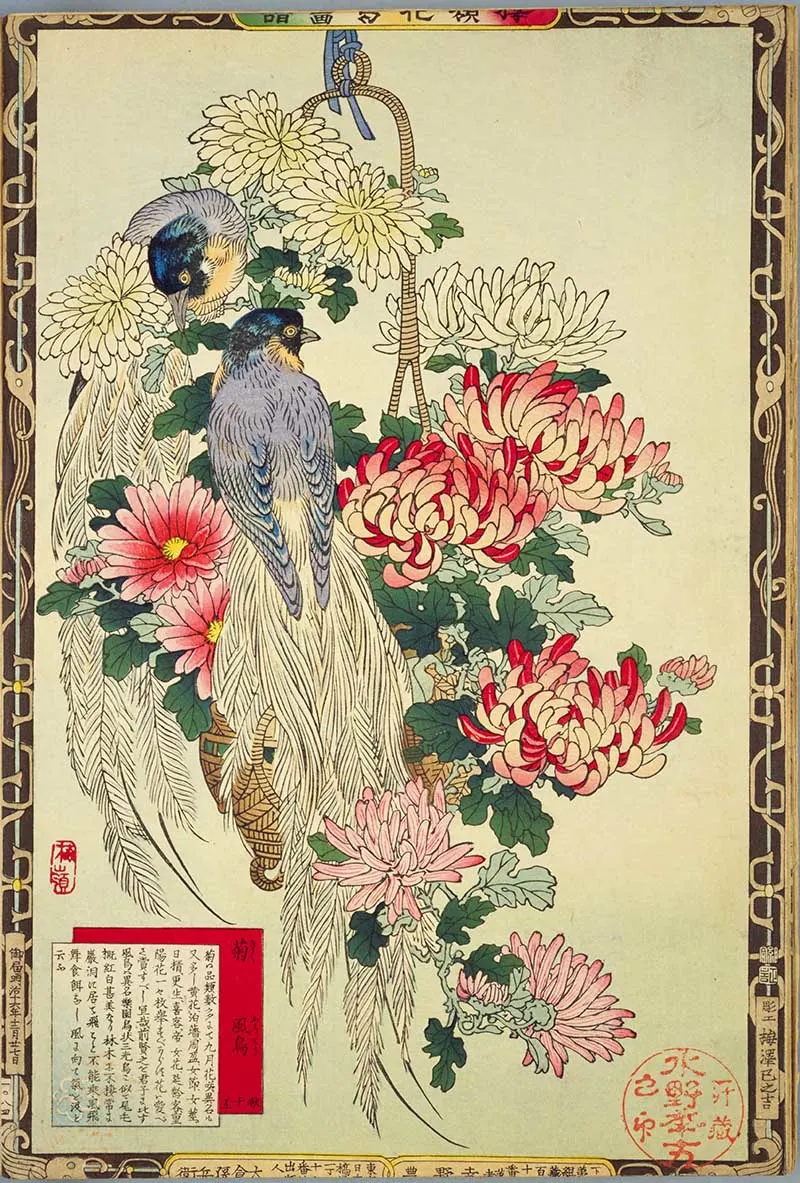
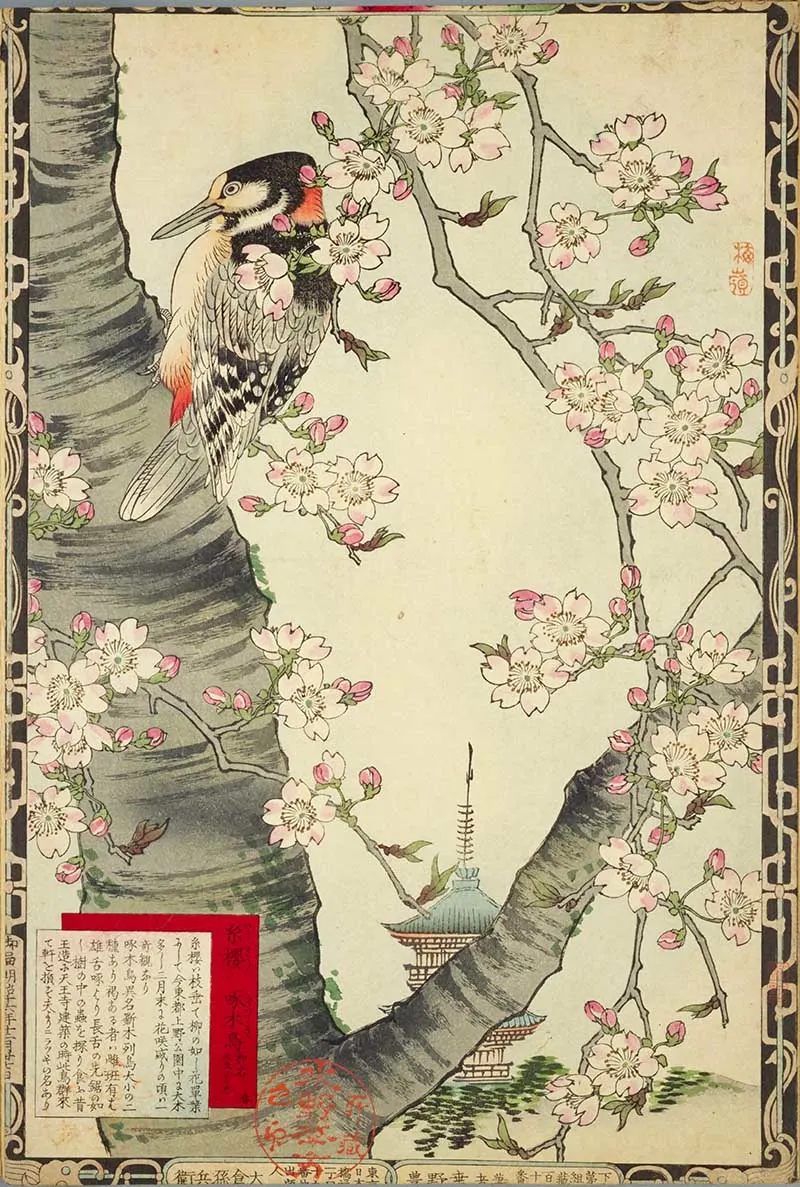

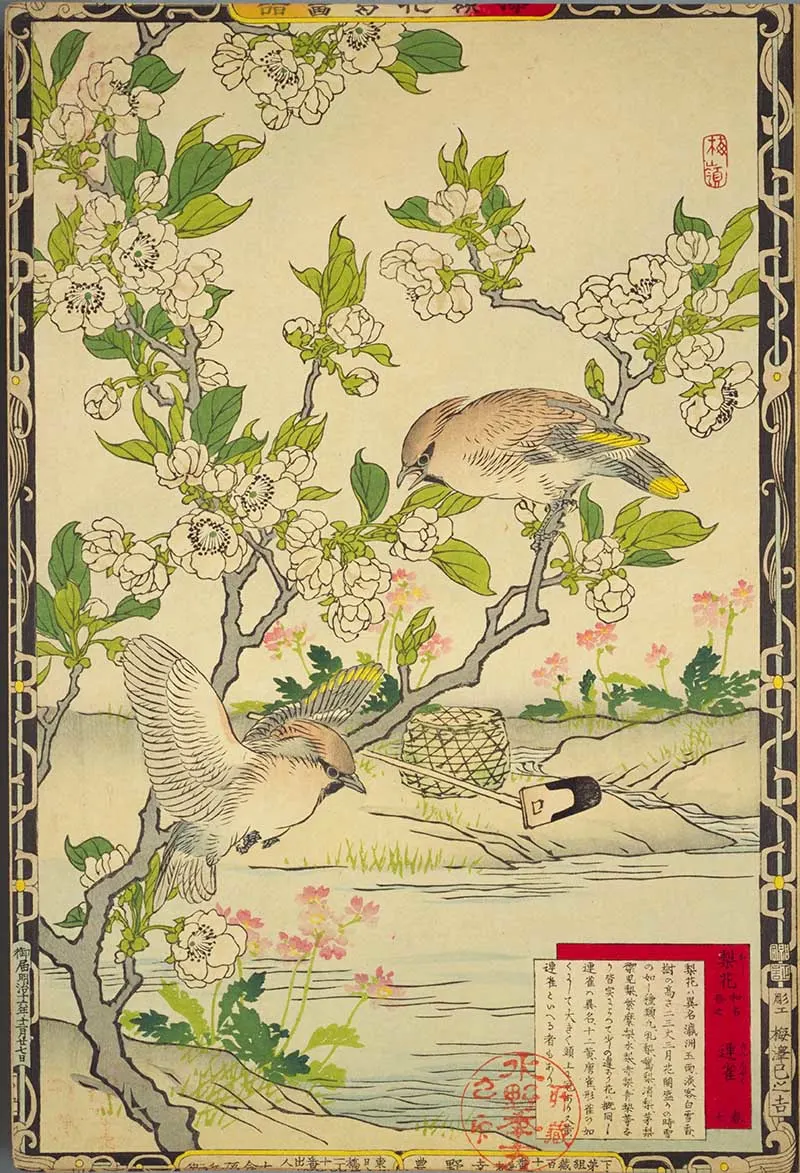
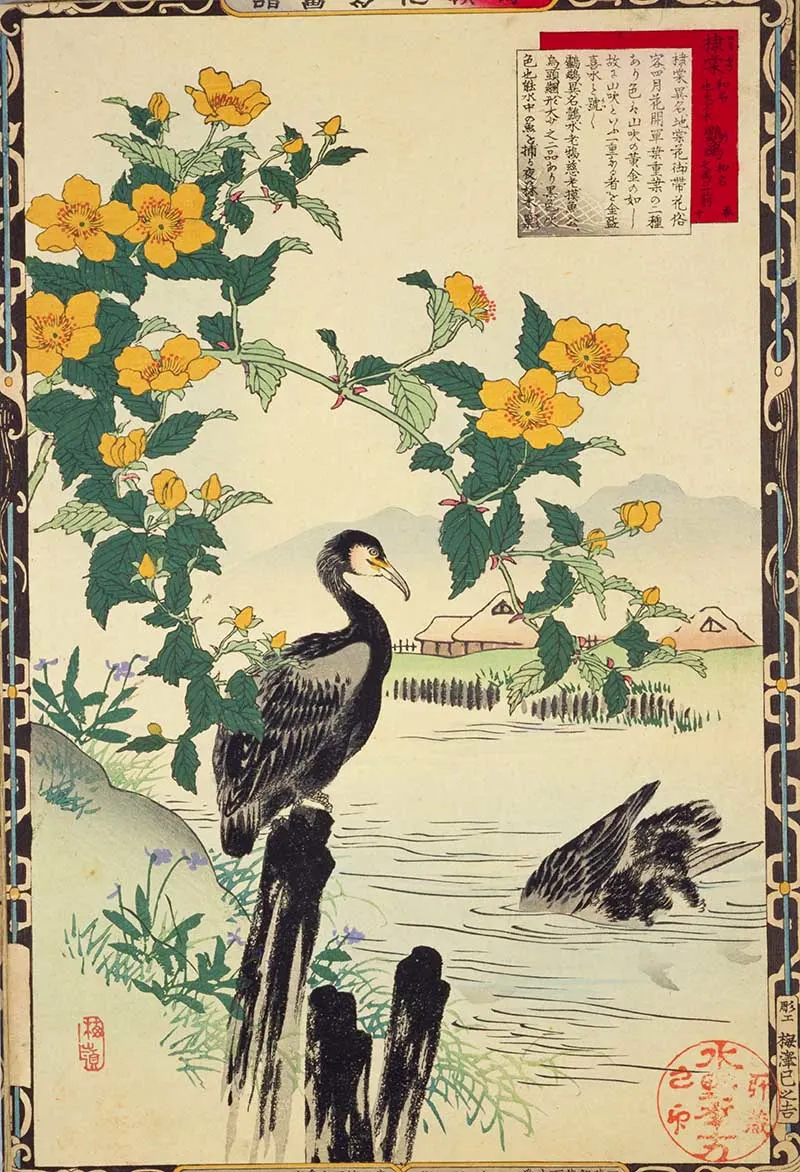
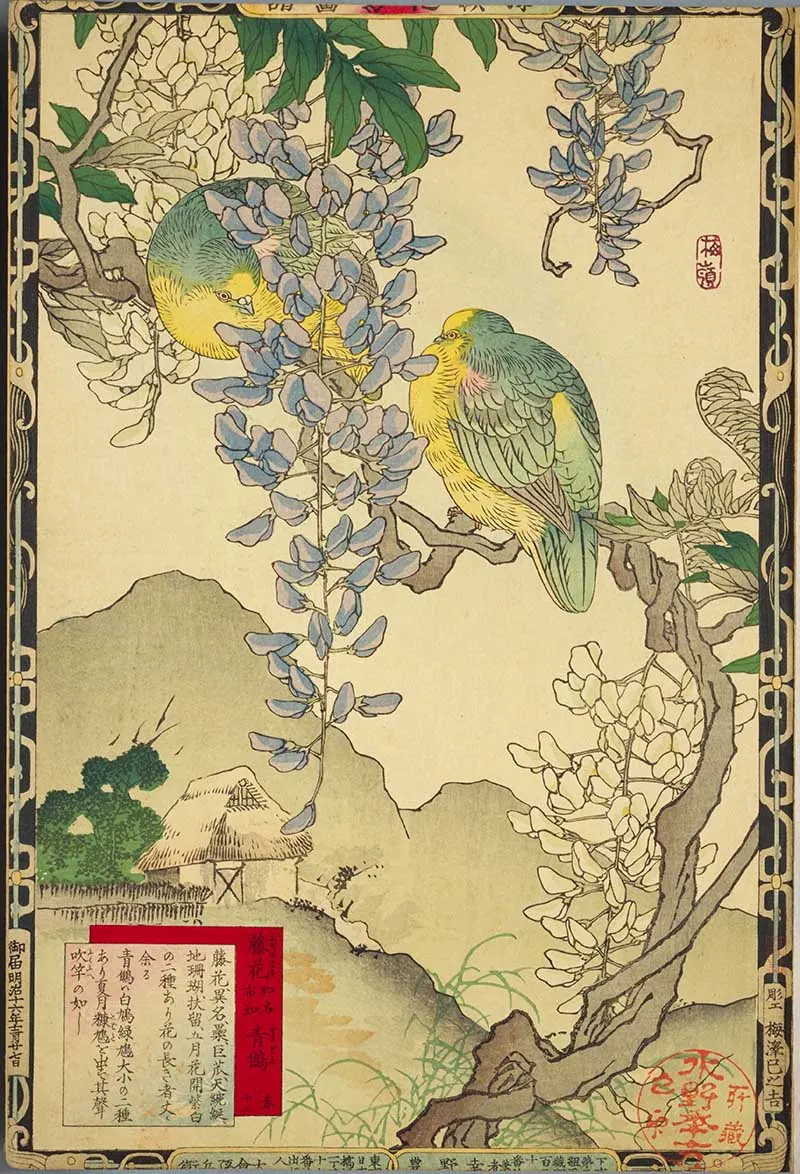
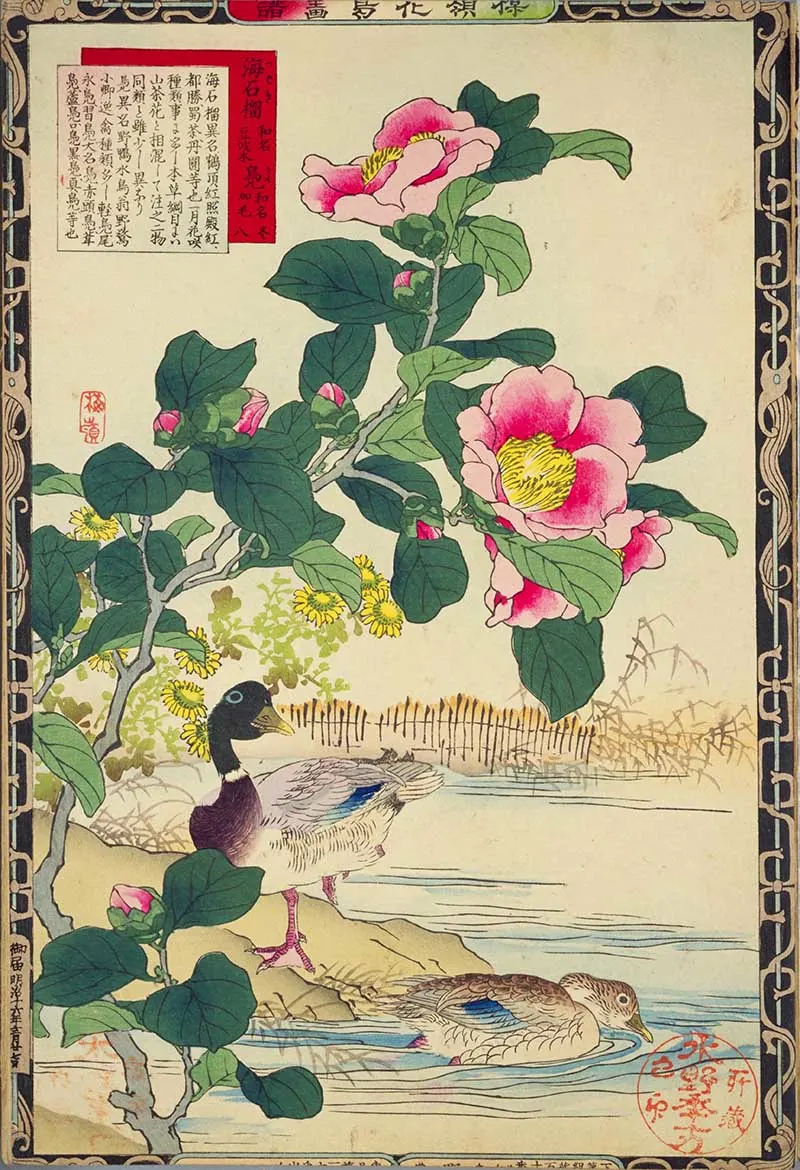
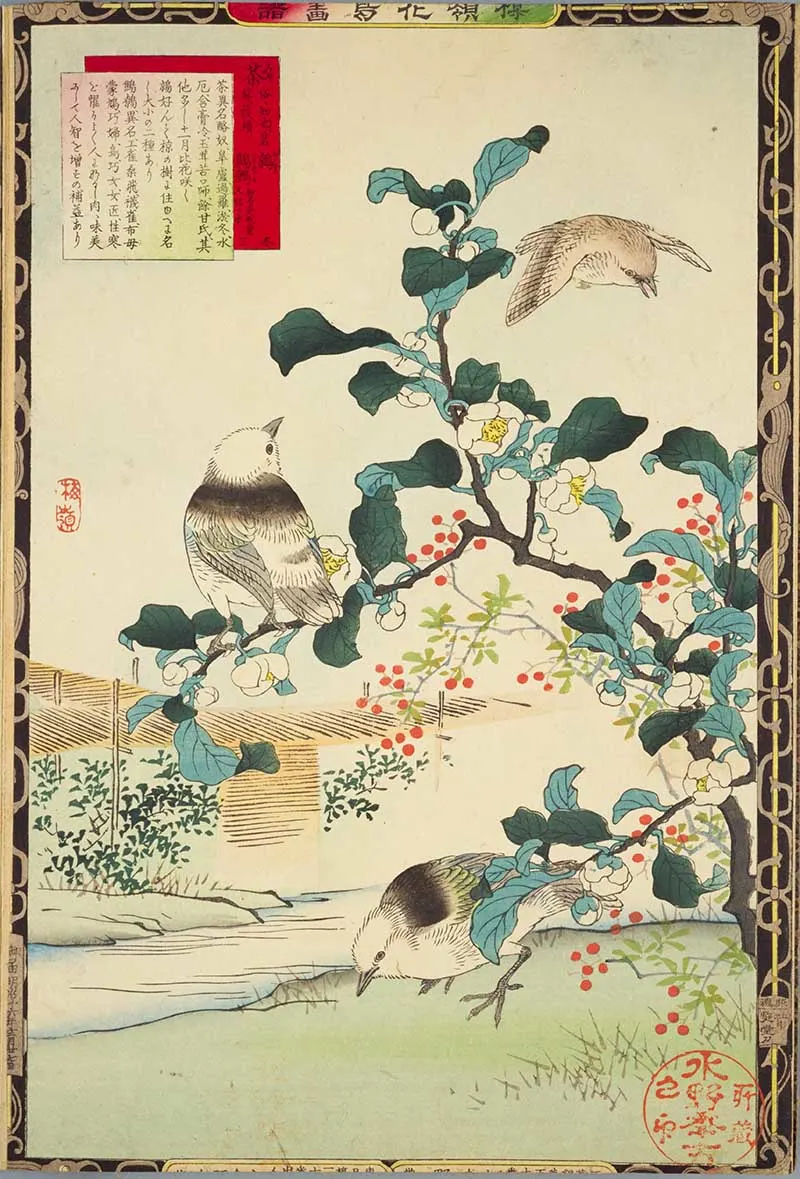
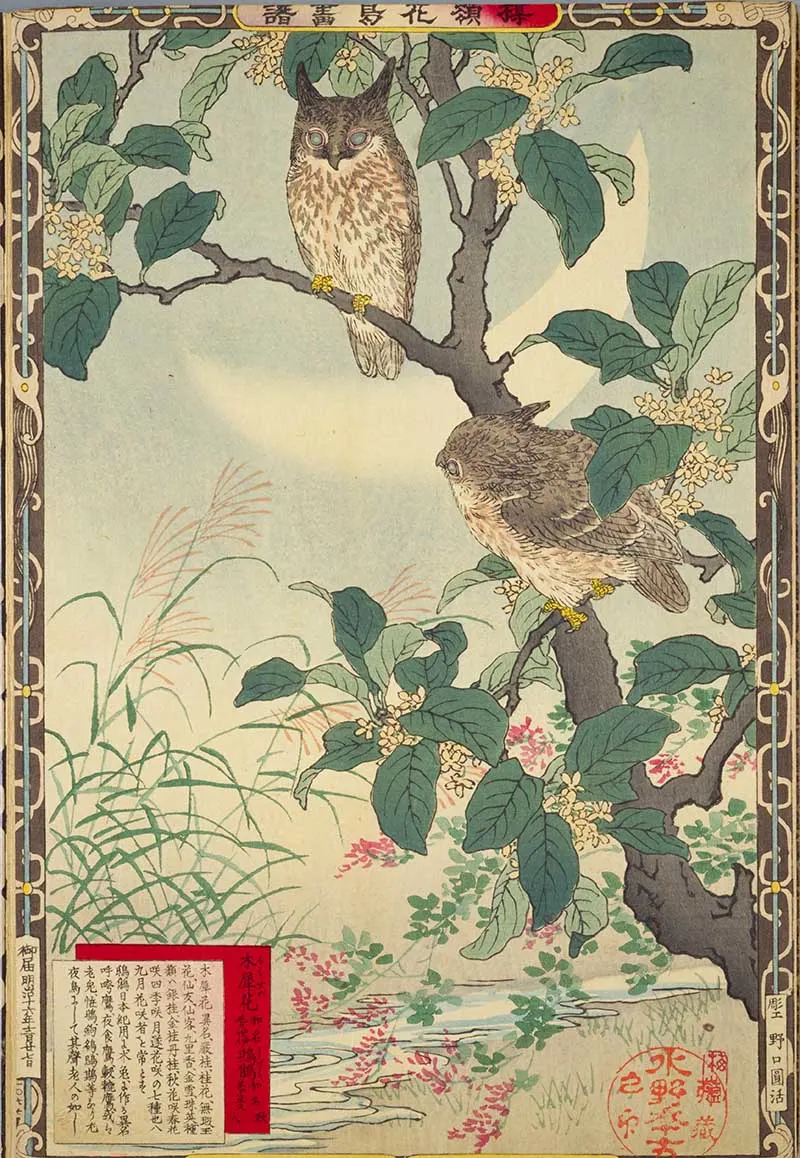
Linda
Saturday 27th of January 2024
I have spent the last month searching for Japanese artwork and ephemera for a journal. Your images are some of the best I have come across! Thank you so much for sharing! I am certainly going to enjoy using these in my project.
claire
Monday 29th of January 2024
Thank you so much, glad you enjoyed them. Have you seen the collection of images from the Shin Bijutsukai, they are great for scrapbooking projects.
Cara ~ Vintage Style Gal
Tuesday 22nd of August 2023
I always love when you share posts like this, I save them and wonder what I can make with them. Thank you for sharing!
claire
Wednesday 23rd of August 2023
Thank you, vintage images are fun to craft with, especially decoupage crafts.
EsmeSalon
Sunday 20th of August 2023
These are so pretty. Love the Japanese designs, always been fond of those. I visited you via Saturday Sparks Link Party 578 I linked up this week with = 16+17 and this is a friendly reminder to come and join us at SeniorSalonPitStop. You will find the linkup information under BLOGGING.
claire
Monday 21st of August 2023
Thank you so much. Yes, Japanese art and design is amazing.
Mary Beko
Monday 14th of August 2023
Just beautiful…
claire
Tuesday 15th of August 2023
Cheers and thank you.